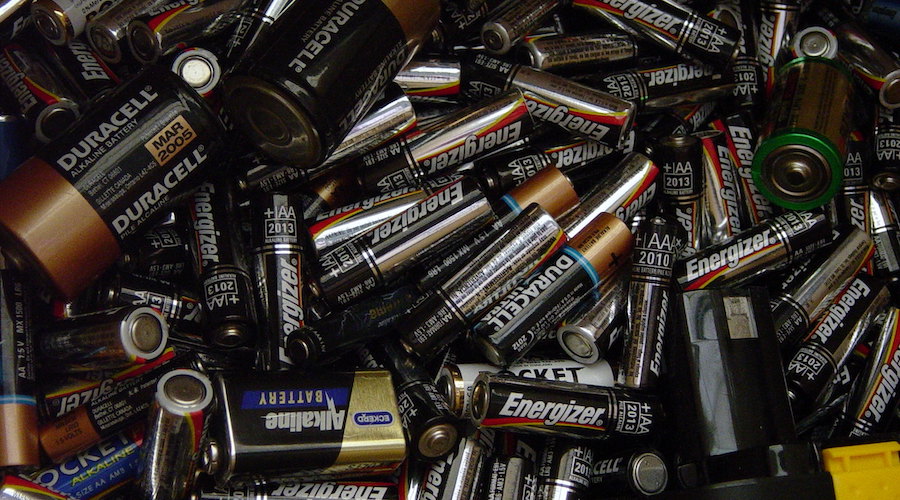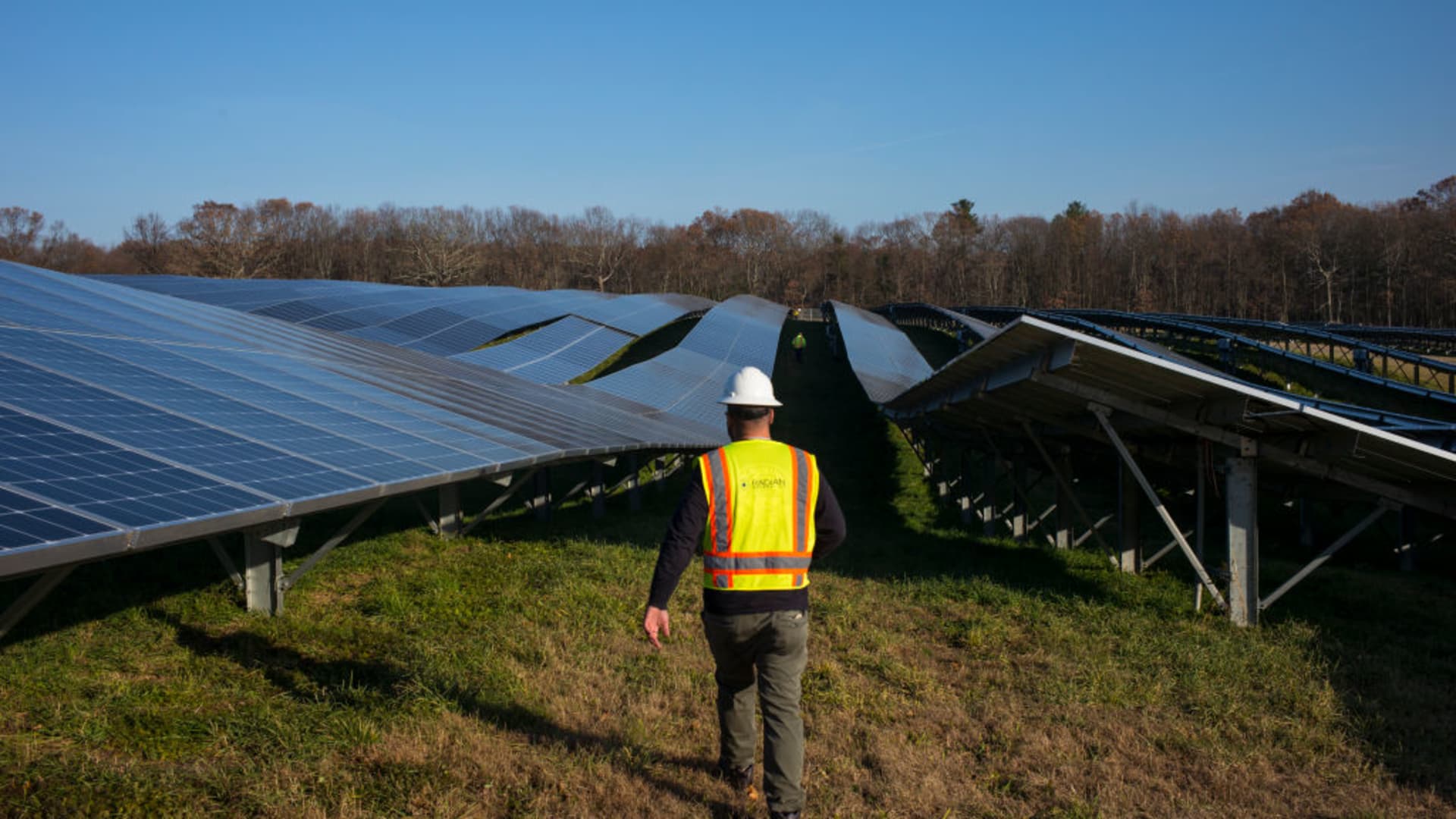Comparing Battery Chemistries For Energy Storage Solutions

 Advanced battery energy storage solutions can improve the efficiency of renewable energy, and the need is increasing exponentially. In 2021, about 20 percent of electricity generation came from renewable energy sources. According to the International Energy Agency, that number needs to increase to two-thirds by 2030 in order to achieve net-zero goals. To truly unlock the potential of renewables, we need larger energy storage systems, and it will take a wide variety of battery chemistries to meet that demand.
Advanced battery energy storage solutions can improve the efficiency of renewable energy, and the need is increasing exponentially. In 2021, about 20 percent of electricity generation came from renewable energy sources. According to the International Energy Agency, that number needs to increase to two-thirds by 2030 in order to achieve net-zero goals. To truly unlock the potential of renewables, we need larger energy storage systems, and it will take a wide variety of battery chemistries to meet that demand.
The three battery technologies being widely utilized are lead, lithium and vanadium redox flow. There are a number of factors to consider when selecting the most appropriate battery chemistry to meet your energy storage needs.
Commercial Maturity
Like other technologies, batteries have evolved in design and manufacturing. Because of the ambitious goals to transition to clean energy, there needs to be a combined effort from the public and private sectors to accelerate innovation from research and development into the prototype and early adoption stages.
Invented in 1859, lead is the most commercially mature of the three battery technologies and has been the primary energy storage solution for many years. Regardless of its longevity, there are still areas where additional research could uncover even more potential capacity. Lead is also relatively inexpensive compared to other battery chemistries.
Lithium is another commercially mature technology in the scale necessary at this time. It was originally used for consumer products in the early 1990s. With its high energy density, lithium is currently the dominant battery technology for energy storage. Lithium comes in a wide variety of chemistry combinations, which can be somewhat daunting to choose from, with Nickel Manganese Cobalt (NMC) and Lithium Iron Phosphate (LFP) having the highest levels of maturity.
While vanadium redox flow battery technology has been around for over 50 years, it is the least commercially mature of the three chemistries. The concept of vanadium flow batteries was developed by NASA to power satellites. This chemistry has the potential to become a leading solution for long-duration energy storage.
Sustainability
Renewable energy must be efficiently acquired and distributed in order to be sustainable. The energy storage solutions used to achieve this goal should also have a low environmental impact.
Lead is the most sustainable of the three battery chemistries. Lead batteries have a 99 percent recycle rate, and the lead battery industry has a well-developed circular economy that reuses and recycles the lead, electrolyte and plastic components of used batteries.
Vanadium is almost infinitely reusable. The electrolyte that constitutes the bulk of a vanadium battery system can be dried out, purified as necessary, and then used in another system. According to the U.S. Geological Survey, about 40 percent of vanadium is recycled.
At this time, lithium is the least sustainable of the three chemistries. The recycling rate is less than five percent, due to the cost and complexity of the process. A lithium battery must be dismantled and shredded, then melted down or dissolved in acid. While recycling processes are not yet widely available, this rapidly evolving area will improve the capture of materials from lithium batteries. These new solutions are already producing modest amounts of battery-grade material at a fraction of the cost of virgin materials.
Time of Operation
Common applications for energy storage include energy shifting, such as storing renewable energy to be used at another time or storing grid power to be used during an outage. Each of these applications has a different time of operation, and that duration is a factor when choosing the most appropriate battery chemistry.
Vanadium is best suited for long-duration energy storage (six hours or more operating time). It has a larger footprint, but it is easier to expand. In order to increase duration, more electrolyte is added to the battery system. Footprint and weight do need to be taken into consideration for vanadium systems, but these systems can be packed closer together thanks to the high level of safety offered by these systems.
Lithium is appropriate for short to medium duration (from a few minutes to four hours operating time). In order to increase duration, additional cells are added to the battery system, which increases the footprint and the planning required in order to meet emergency access requirements should there be a safety event. There is a tipping point, as cells are needed to increase duration, where the footprint of a lithium system, with appropriate safety spacing, may exceed that of a vanadium system.
Lead also works best for short to medium duration, especially in situations where depth of discharge is fairly shallow and low up-front cost is a major gating factor. It is possible to increase the duration by adding cells, similar to a lithium system. However, weight and space are significant factors in order to increase time of operation.
Useful Life
Useful life is a combination of cycle life, calendar life and the operating environment. The useful life of a lithium battery is about 10 to 15 years, while vanadium can last more than 30 years. Lead batteries can have a useful life up to 30 years, depending on the design and applications.
Lead batteries are typically measured by cycle life which is heavily influenced by the depth of discharge conditions, with capability from 1,200 to 1,800 cycles at 80 percent depth of discharge depending on design. The life of lithium batteries is generally specified at much greater depths of discharge in the 80 to 100 percent range and offers two to three times the life of a lead battery with approximately 3,000 to 10,000 cycles. By contrast, vanadium battery technology has a near-infinite cycle life. For all battery technologies, these lifespans are contingent on proper maintenance.
Lead and lithium are sensitive to higher temperatures. The ideal operating temperature for these battery systems is between 20°C to 35°C, with some impact on life above this range. Vanadium systems can tolerate higher heat, up to 50°C.
Photo credit: Stryten Energy
” data-medium-file=”https://cleantechnica.com/files/2022/08/IMG_4880-400×300.jpg” data-large-file=”https://cleantechnica.com/files/2022/08/IMG_4880-800×600.jpg” loading=”lazy” class=”wp-image-275755 size-large” src=”https://cleantechnica.com/files/2022/08/IMG_4880-800×600.jpg” alt width=”800″ height=”600″ srcset=”https://cleantechnica.com/files/2022/08/IMG_4880-800×600.jpg 800w, https://cleantechnica.com/files/2022/08/IMG_4880-400×300.jpg 400w, https://cleantechnica.com/files/2022/08/IMG_4880-768×576.jpg 768w, https://cleantechnica.com/files/2022/08/IMG_4880-1536×1152.jpg 1536w, https://cleantechnica.com/files/2022/08/IMG_4880-2048×1536.jpg 2048w” sizes=”(max-width: 800px) 100vw, 800px”>
Photo credit: Stryten Energy
Safety
All three battery systems are generally safe, assuming there are no defects or damage. Lithium batteries are sensitive to high temperatures and inherently flammable. If the temperature exceeds a critical level or if damage leads to an internal short circuit, thermal runaway occurs. A battery management system ensures that the lithium cells remain in their specified working range. As an additional precaution, lithium batteries should be segregated as much as possible to prevent a fire from spreading throughout the system.
The safety concerns for lead battery systems are often determined by their design. Flooded systems contain liquid electrolyte, requiring a containment system in case of rupture and ventilation for potential gassing. VRLA batteries require a well-designed charging system to monitor and manage voltage and temperature. Lead is also susceptible to thermal events, but these incidents are much more easily contained compared to lithium battery systems.
Compared to the other battery technologies, vanadium is generally considered to be safer. While the electrolyte itself isn’t flammable or prone to thermal runaway or deflagration events, it is corrosive and does require adequate containment strategies.
Supply Chain
Energy is vital to keep our economy moving. By diversifying our energy sources, our country is better insulated from supply shocks influenced by foreign imports. Reliance on imports also leads to security vulnerabilities. Recent shortages and supply chain disruptions have proven that a domestic supply chain should be another important consideration for energy storage systems.
Lead is readily available and domestically produced. Domestic recycling provides 73 percent of the domestic demand for lead. Over 90 percent of domestic lead battery demand is met by North American manufacturers. The U.S. lead battery industry supports over 92,000 jobs and over $26 billion in overall economic impact.
Lithium is one of 50 mineral commodities listed as critical to the U.S. economy and national security. Australia is the global leader in lithium mine production, followed by China and Chile. While the U.S. has about 4 percent of lithium reserves, we produce less than 2 percent of the world’s supply.
Vanadium is also on the list of critical minerals. China leads the world in vanadium production, then South Africa and Russia. Currently, there is no domestic production of vanadium, leaving the U.S. dependent on foreign sources.
Conclusion
The energy sector is the source of 76 percent of greenhouse gas emissions globally. Replacing fossil fuel power with energy from renewable sources would dramatically reduce carbon emissions. The United States has set a goal of reaching net-zero emissions by 2050 and creating a carbon pollution-free power sector by 2035.
To achieve this objective, there will be an emphasis on renewable energy sources such as wind and solar. This transition to clean energy will require multiple, reliable, sustainable and safe energy storage solutions. Those solutions will depend on a variety of advanced battery technology, and each chemistry will have its place to match supply with demand.
This article is supported by Stryten Energy.
Appreciate CleanTechnica’s originality and cleantech news coverage? Consider becoming a CleanTechnica Member, Supporter, Technician, or Ambassador — or a patron on Patreon.
Don’t want to miss a cleantech story? Sign up for daily news updates from CleanTechnica on email. Or follow us on Google News!
Have a tip for CleanTechnica, want to advertise, or want to suggest a guest for our CleanTech Talk podcast? Contact us here.
Advertisement
This post has been syndicated from a third-party source. View the original article here.




